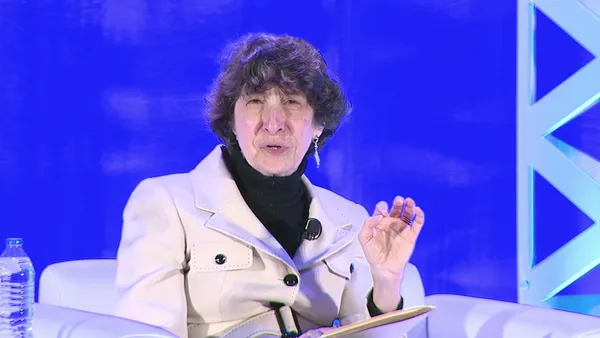UPDATE: Jan. 29, 2021: Many U.S. employers have already been taking measures in coronavirus pandemic-related prevention programs for almost a year, Susan Harthill, partner at Morgan Lewis, told HR Dive in an email. "The new guidelines, therefore, largely track current practices," Harthill said.
Some guidelines are new, "including the statement that face coverings may protect the wearer (another reason to encourage mask-wearing), a recommendation on supporting vaccines for employees, a recommendation not to test someone who has had COVID-19 in the last 90 days, and some return-to-work criteria," Harthill said. The new guidance also notes that other, shorter quarantine periods may be used in conjunction with other measures, though it still emphasizes the Centers for Disease Control and Prevention's 14-day quarantine recommendation for close contacts, she added.
Dive Brief:
- At President Joe Biden's request, the U.S. Occupational Safety and Health Administration (OSHA) released guidance for employers on keeping employees safe from COVID-19 exposure. "Protecting Workers: Guidance on Mitigating and Preventing the Spread of COVID-19 in the Workplace," released Jan. 29, is aimed at most non-healthcare settings, according to the document.
- OSHA in the guidance reinforced its support for use of face coverings, advising that the safety measure is not a replacement for physical distancing. Additionally, prevention programs should include a hazard assessment and measures to mitigate the spread of coronavirus — including the use of personal protective equipment when applicable, the agency recommended. To encourage potentially infected employees to remain at home, OSHA suggested employers create policies for absences that "don't punish workers." Communication about policies and procedures should be properly communicated to both English and non-English speaking workers, OSHA recommended.
- The agency also recommended employers appoint a workplace coordinator responsible for coronavirus issues and adopt retaliation protections for workers who raise coronavirus-related concerns. OSHA recommended training employees on coronavirus protocols; making information on testing available; conducting screenings when appropriate; and keeping track of work-related illnesses and death. OSHA will update the guidance relevant to particular industries or workplace situations "over time," and will keep track of changes "for the sake of transparency," the document stated.
Dive Insight:
Under the OSH Act of 1970, employers are responsible for providing a safe workplace free from recognized hazards likely to cause serious physical harm or death. However, the agency's most recent guidance is not legally binding.
"More than 400,000 Americans have died from COVID-19 and millions of people are out of work as a result of this crisis," Senior Counselor to the Secretary of Labor M. Patricia Smith said in a statement announcing the document. "Employers and workers can help our nation fight and overcome this deadly pandemic by committing themselves to making their workplaces as safe as possible. In a Twitter post Jan. 29, the National Safety Council, a nonprofit safety advocacy organization, applauded the new guidance to mitigate risk and prevent the spread of the coronavirus.
Under the Trump administration, OSHA provided pandemic-related safety through guidances, but did not exercise its power to implement more binding emergency temporary standards at workplaces. Last year, the AFL-CIO was among a group of unions that sued the agency demanding a COVID-19 emergency temporary standard, but the U.S. Circuit Court of Appeals for the D.C. Circuit ruled OSHA was entitled to "considerable deference" and declined to force the agency to act.
Biden, in a Jan. 21 executive order, gave OSHA two weeks to issue the new guidance; the agency published its update in one week. He also required OSHA to consider by March 15 whether it should issue nationwide emergency temporary standards, which could result in mandates for employers.














